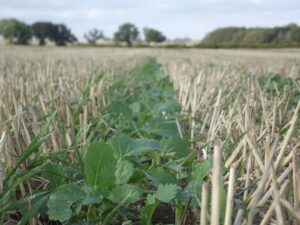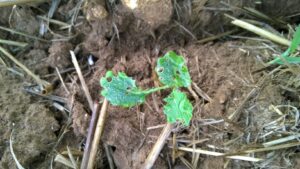Life in Life Scientific…
The product briefing season is well underway. An opportunity to update growers and agronomists on life in Life Scientific, new products, new developments and best practise advice for the coming autumn season.
We have some new products as well as new uses with the addition of Extensions of Authorisation for Minor Uses (EAMUs) so if you haven’t requested a briefing yet, and would like to hear from us about our current portfolio, new registrations, label changes or just catch up for a chat, either in person or virtually, we’d be happy to hear from you.
Product News
Winter Linseed is gaining in popularity and increasing its UK acreage. It could be seen as an easier crop to manage in the autumn due to being unattractive to Cabbage Stem Flea Beetle and slugs.
Basilico is a reverse engineered Calisto and contains 100g/L of mesotrione providing excellent control for a range of broad leaved weeds.
Basilico was granted an Extension of Authorisation for Minor Use (EAMU) in crops of Linseed when used at the pre-emergence timing and can be applied once at a maximum rate of 1.5L/ha for control of Common chickweed, Fat-hen and Field pansy amongst other autumn germinating weeds.
The EAMU and further product details can be obtained from our website.
https://lifescientific.com/products/uk/basilico/

Oilseed Rape Focus

Following the 15% reduction in oilseed rape crops harvested this year (AHDB planting survey 2021), on the back of an already declining cropping area from the previous year, this autumn has seen an upturn in planting due to near perfect establishment conditions for many.
Whilst warm, moist seedbeds provide the right conditions to get the crop started, the risks associated with growing OSR have not gone away.
Once the crop is in the ground it needs to be protected – preferably without large up-front costs but due to the increase in selling prices it’s more important than ever to provide the right protection to maximise yield.
Disease control in OSR is much more straightforward than pest control.
Phoma can sometimes be neglected as Light Leaf Spot takes the headlines, but phoma lesions can progress into quite damaging stem cankers which severely impact water and nutrient movement through the plant – impacting the plant’s ability to grow away from slugs, pigeons etc.
Early phoma infections on smaller plants can cause losses of up to 0.5t/ha so it’s important to prioritise smaller plants and apply a fungicide when treatment threshold levels are reached. Difenostar containing 250g/L difenconazole is a great option for phoma control without the up-front spend. The same level of disease control can be achieved with 2 applications of 0.25L/ha 3-4 weeks apart as a single dose of 0.5L/ha. If fresh symptoms are seen in late winter or early spring a second application of 0.5L/ha should be made.
Total dose of Difenostar on oilseed rape is 1L/ha. For more product information visit the website
https://lifescientific.com/products/uk/difenostar/
Although phoma is the most widespread early OSR disease, Light Leaf Spot is the most damaging in terms of yield with potential losses of up to 1t/ha
Earlier sown crops are at the greatest risk of Light Leaf Spot and reports show this disease is being found earlier and recycling quicker than previously thought.
It is important to protect crops in the autumn to prevent a more devastating reoccurrence of the disease in the spring. Fungicide applications should be prioritised for varieties which score below 6 on the Recommended List but all varieties are susceptible so need regular monitoring.
There are several regional forecasting tools which can help for effective application timing. A stacked triazole approach using both tebuconazole and prothioconazole provides protective and curative activity and reduces the reliance on solo prothioconazole as part of a resistance management strategy.
Esker is our reverse engineered Kestrel containing 160g/L prothioconazole and 80g/L tebuconazole. It is an excellent fungicide choice for the control of Light Leaf Spot and will also contribute to plant growth regulation and managing crop canopies in order to maximise yield.

We can’t talk about OSR autumn protection without mentioning Cabbage Stem Flea Beetle. Early sowing could be a way of preventing damage from Cabbage Stem Flea Beetle as larger crops may withstand a greater amount of insect damage.
However constant monitoring is needed until plants are big enough to grow away from early shot-holing damage.
Lambdastar our reverse engineered Hallmark Zeon, is a good option for pyrethroid sensitive CSFB. Lambdastar contains 100g/L lambda-cyhalothrin and should be used as part of an anti resistance strategy when thresholds are reached. If using as a stand alone application a non-ionic wetter should be included to maximise efficacy.

